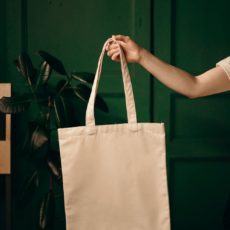Thankfully, the concept of a circular economy has gained significant traction as we grapple with the consequences of traditional linear economic models.
Read moreShopping
Our Sustainable Gift Picks for the Holidays

Have yourself a sustainable happy holiday season!
Read moreGreenwashing: Smoke, Mirrors, and Lies, Oh My!

Greenwashing is the process of conveying a false impression or providing misleading information about how a company’s products are environmentally sound. There are many different ways that a company can greenwash their product or image. The marketing by massive corporations is done by very smart people with enormous budgets, so there’s no shame in having fallen for greenwashing. But we’re here to help make sure it doesn’t happen again!
Read moreThe problem with Greenwashing, and how to spot it

You’ve probably noticed the sudden abundance of products which are eco-friendly, environmentally friendly, green, biodegradable, sustainable, natural, sourced sustainably, recycled, recyclable, compostable, and so on and so forth. There’s an exhausting list of terms which could be
Read moreKeeping it Sustainable This Holiday Season, The Top Ten

We hope your holiday season is off to a great start and you’ve taken a moment to enjoy the gorgeous lights, décor, and changing seasons around you. If 2020 has taught us anything, taking time to appreciate and be grateful for the little things and, more substantially, the people in our lives and what truly makes us happy is more important than ever. And with that in mind, today we’re going to get into some tips for how to get through this holiday season more thoughtfully and more sustainably.
Read moreMy Top 7 Sustainable Swaps – Tried and Tested!

It’s been a while since I’ve banged on about personal care and more sustainable choices in our normal every days lives. So here’s an update for you! Tried and tested products which I’ve been using as alternatives
Read moreEthical Shopping

We recently had the pleasure of chatting with Lindsay Karlsen, founder of VALYOS, an eco-friendly online platform for ethical shopping. The amount of research required to find sustainable products and brands is not always possible with life’s busy schedule. This is where VALYOS can help you connect with sustainable brands and second-hand sellers who share your same sustainability values.
Read moreBesides carbon counting, here’s what you can do to shop sustainably

Grab some fantastic sustainable shopping advice from eco-warrior Lindsay Karlsen, from VALYOS – an online eco-friendly marketplace!
Why is sustainable shopping important? The global population is expected to rise to 8.5 billion people by 2030 with the middle class increasing by 3 billion people over the next 20 years. Since 1990 the amount of natural resources extracted per person has risen from 8.1 tonnes to almost 12 tonnes in 2015. That’s a huge increase in demand which will continue to put a strain on the planetary boundaries, if not addressed.
Read moreShrimp wrapped instead of shrink wrapped?

When you think about prawn laksa, you probably don’t automatically start picturing the discarded prawn shell wrapped around another food item. But some scientists (and a teen from Australia) have been thinking just that!
Plastic is the environmental problem that just keeps on giving. But it can’t be disputed that it’s an incredibly handy material. So finding plastic alternatives which do the same useful tasks but don’t pollute our waterways (or bellies, after it’s been ingested by fish first), is high on the lists of people trying to help save the planet.
Read more8 Green Certifications to Know

How do you know if the environmentally-friendly and sustainable products you buy actually ARE environmentally-friendly and sustainable? With certifications! Today, Lexi breaks down 8 of the most common, so we can rest assured knowing that we’re really doing our best to live our most sustainable lives in everything from the clothes we wear, to the food we eat, to the products we purchase, to the buildings we live in.
Read more
